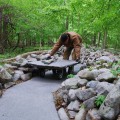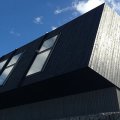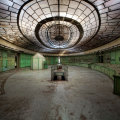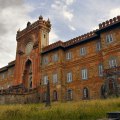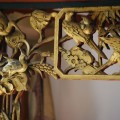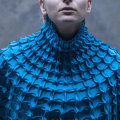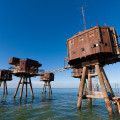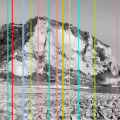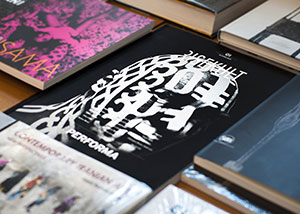We aim to create an architecture that defies classification and reductionism. We explore unseen levels of resolution and topological complexity in architecture by developing compositional strategies based on purely geometric processes.
In the Digital Grotesque project, we use these algorithms to create a form that appears at once synthetic and organic. The design process thus strikes a delicate balance between the expected and the unexpected, between control and relinquishment. The algorithms are deterministic as they do not incorporate randomness, but the results are not necessarily entirely foreseeable. Instead, they have the power to surprise.
The resulting architecture does not lend itself to a visual reductionism. Rather, the processes can devise truly surprising topographies and topologies that go far beyond what one could have traditionally conceived.
Digital Grotesque is between chaos and order, both natural and the artificial, neither foreign nor familiar. Any references to nature or existing styles are not integrated into the design process, but are evoked only as associations in the eye of the beholder.
Digital Grotesque takes additive manufacturing technology to a true architectural scale. Digital Grotesque presents a fully immersive, solid, human-scale enclosed structure with a perplexing level of detail. Its geometry consists of hundreds of millions of individual facets printed at a resolution of a tenth of a millimeter, constituting a 3.2-meter high, 16 square meter large room.
In the Digital Grotesque project, every detail of the architecture is generated through customized algorithms, without any manual intervention. A simple input form is recursively refined and enriched, culminating in a geometric mesh of 260 million individually specified facets. This single process generates many scales of architecture, from the overall form with its broad curvature, to local surface development, down to minute textures.
The application of 3D printing technology in architecture has up to now been limited to prototyping or producing small-scale models. Material costs are high, machines have limited scales, and the majority of materials are not strong enough to fulfill construction requirements.
Sand-printing technology has recently emerged as an additive manufacturing technique that overcomes these limitations. This technology is currently used primarily to create casting forms in for industrial applications. Yet it has unique features that make it suitable to create architectural components. Specifically, it allows the fabrication of large-scale elements (currently up to 8 cubic meters in size) with high resolution and accuracy at a competitive price and in short period of time. The printed sandstone elements can be fully self-supporting and can be assembled as a solid construction.
Natural sandstone has been used as building material since prehistoric times. Cathedrals, temples and other ornamental structures were often constructed with sandstone, as it is a relatively soft material that is easy to work while still having structural resistance. 3D printed sandstone has very similar properties once it is post-processed. In order to further harden the micro-detailing of the grotto (local parts are thinner than 2mm) and to increase the structural stability, the printed sandstone is infiltrated with resin.
Michael Hansmeyer and Benjamin Dillenburger: Digital GrotesqueVIDEODigital Grotesque . Printing Architecture from Digital Grotesque on Vimeo. COMMENTSRELATED POST |
|
|
|
|




















